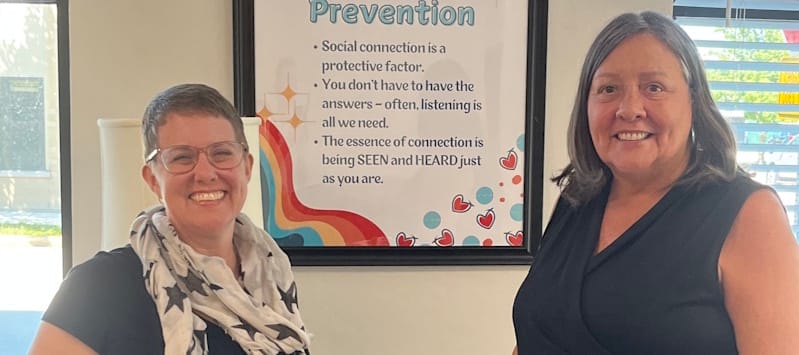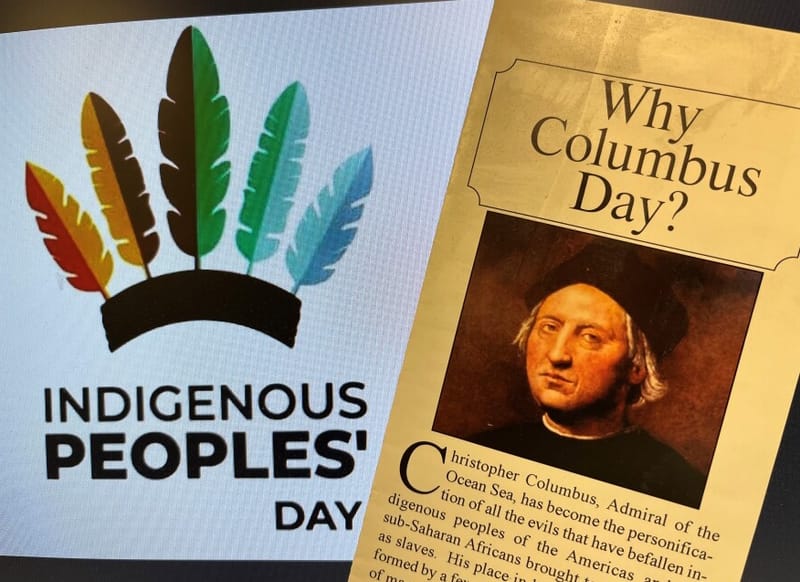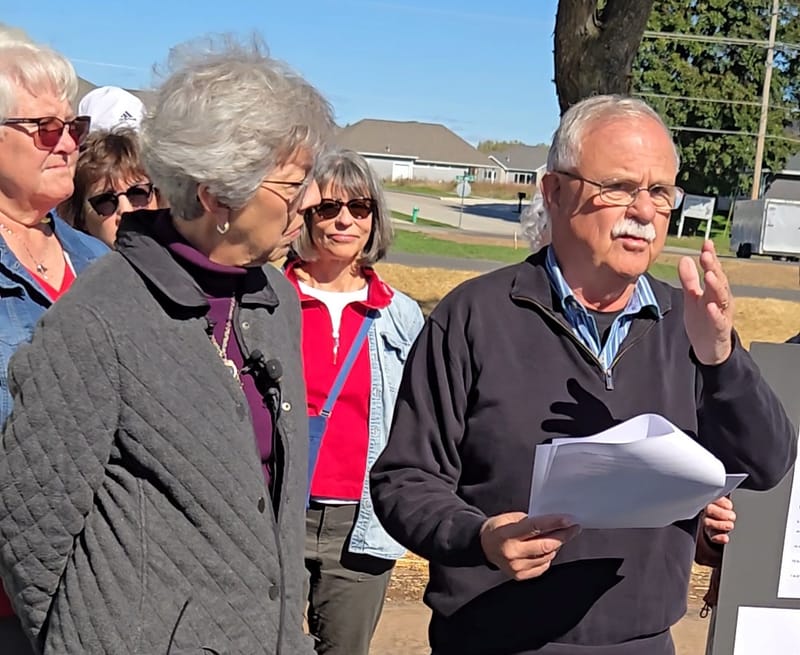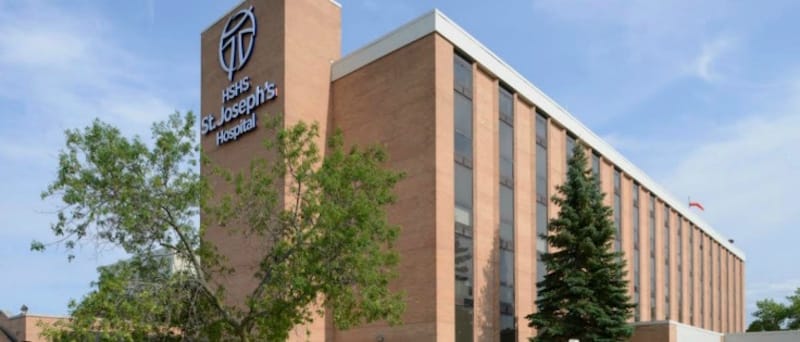Community Living Room offers connection without judgement
It's an airy, welcoming and comfortable space – an actual living room, really – for anyone to inhabit, without expectations.
- A Space for Unconditional Connection: The Community Living Room is designed as a non-transactional, judgment-free zone where anyone can simply exist.
- Empathy-Centered Approach: The space is staffed by trained "listeners" who prioritize empathy and deep listening over providing solutions.
- "Connection is Prevention" Model: Founded on the belief that human connection can be a powerful preventative measure for mental health crises, the Community Living Room offers a safe alternative to traditional emergency services.
Human connection in 2025 has never been a more valued – or less accessible – commodity.
Whether it is the safety and isolation of social media or the tyranny of entertainment choices at our fingertips or the distress and helplessness so many feel over the state of the country and the world, we seem to be a nation in emotional crisis.
Then, too, is the human condition itself and the many ways we are conditioned through culture, upbringing or social interaction to fiercely protect ourselves.
Toss in, for many people, economic stress or mental health issues or a sense of lostness over futures they don’t feel they control or the strain of living as a member of a marginalized, ever-more-vulnerable community and the crisis is magnified.
The Community Living Room in downtown Appleton seeks to offer a zone of comfort for all those people – and everyone else. In concept, the Community Living Room sounds almost utopian in its ideals of unconditional and non-transactional acceptance of anyone who walks through their doors on the first floor of the new RISE affordable housing complex on West Harris.
“One of the ways I think this is revolutionary,” says Karen Iverson Riggers, one of the co-founders of the Community Living Room created by Ebb & Flow Connections Cooperative, “is centering empathy and human emotion in the way we connect and listen. If you are sad, please be sad. If you are angry, I’m going to hold space for you to be as angry as you need to, and I’m not going to say you’re overreacting or need to get over it, which are common responses people receive.”
All are welcome
Quite simply, The Community Living Room is an airy, welcoming and comfortable space – an actual living room, really – for anyone to inhabit, without expectations. Some stop by for a bite to eat or a bottle of water on a hot day; some to simply sit and play the guitar; some to work a jigsaw puzzle arranged on a large coffee table; some to read a book; others, still, to have a conversation with one of the trained “listeners” on hand to listen and accept without judgement. Some might be in crisis and, over time, come to trust the Community Living Room as a truly safe space that asks nothing of them but their presence. The idea is not to fix anyone but simply to hold space for them.
“The only outcome we are measuring is connection,” says Iverson Riggers, whose career is in mental health.
For that connection to take place, the listeners – the Community Living Room has 21 paid listeners – must bring their own authentic selves through the doors.
“(Author) Brene Brown has a quote that says something like, you can only connect to others to the extent you're connected with yourself,” Iverson Riggers says. “So when folks show up here to listen, you don't have to check yourself at the door. So if you as one of our listeners are having a rough day, you can show up and it's a rough day. Or if you have something going on in your life, you can talk about it as a listener. Most other spaces in community where folks are providing support, you have to put on this mask and there’s this boundary and you can't show up with your full humanity.”
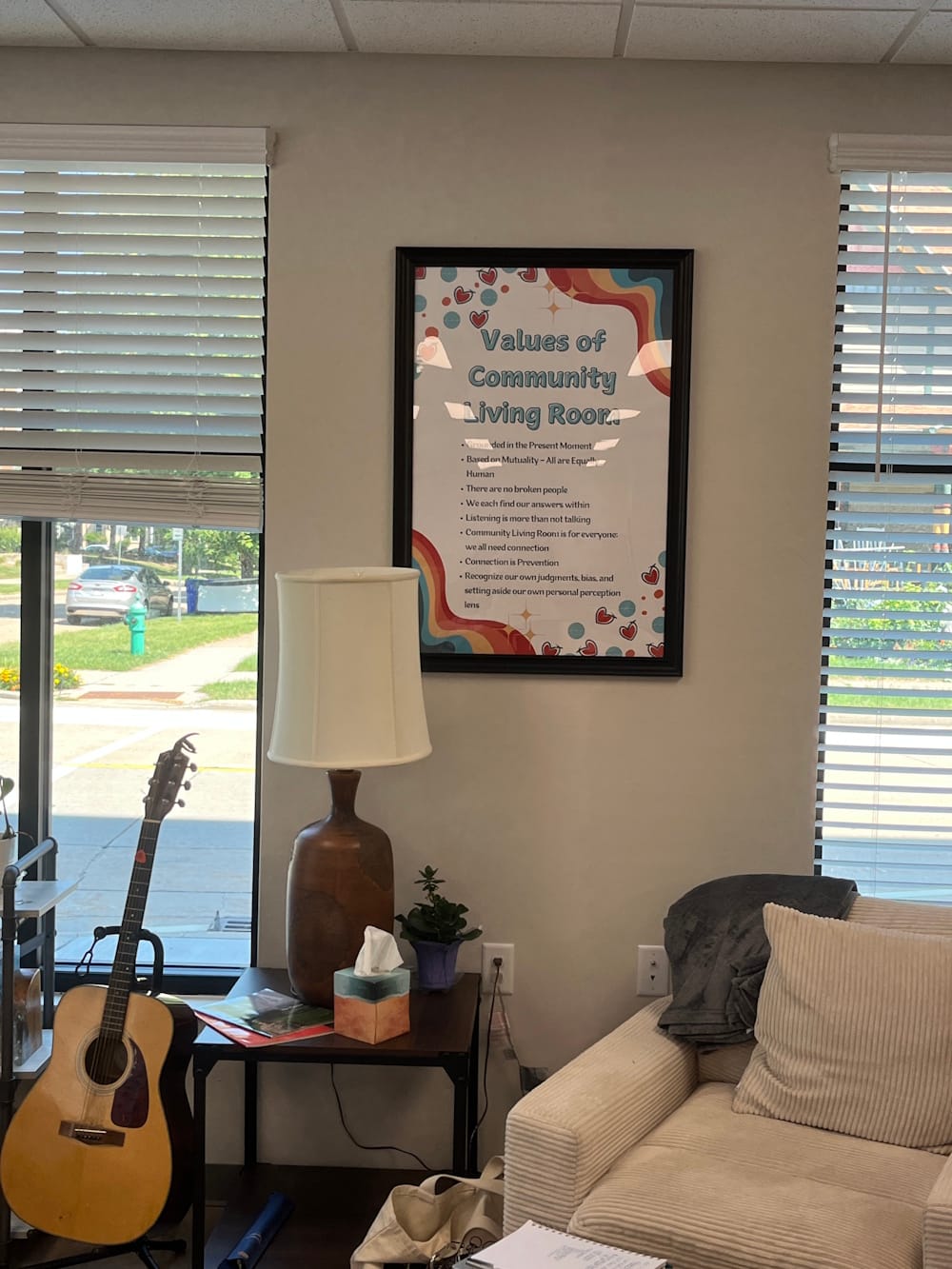
Lynn McLaughlin, another co-founder of Ebb and Flow Connections, says that vulnerability is the key to the connections they are making, placing the listener and the person walking through the door on an equal footing. Among the values listed on a poster adorning one wall is “mutuality.”
“We’re all equally human,” McLaughlin stresses. “And so that means I’m the expert in my life and you’re the expert in your life. So we don’t need to fix each other. We just need to be present with each other and respect each other as equally human.”
‘Connection is prevention’
The idea for Community Living Room was hatched about seven years ago when Iverson Riggers and McLaughlin were discussing the insufficiencies of community mental health. Iverson Riggers’ background is in mental health advocacy and McLaughlin’s is in substance abuse and recovery.
“A lot of times what we see happen to people in crisis is you call a crisis hotline or 911 and a police officer shows up at your door,” Iverson Riggers says. “And you get handcuffed and taken to a hospital where you are triaged as the least urgent even if you are having thoughts of suicide. So it’s not uncommon for people to wait 12, 14 hours to see somebody. And that’s just not okay.”
Iverson Riggers and McLaughlin thought that these people should be met with compassion first, that they should be listened to and provided agency. Their organization's tagline is "Connection is Prevention" and the Community Living Room model is built around that belief. Both McLaughlin and Iverson Riggers were introduced to Emotional CPR over 10 years ago and serve as Lead Trainers for the state of Wisconsin. Building capacity of people trained in the values-based framework, centered in emotions and deep listening, created a new type of support and connection.
ECPR is an international discipline licensed by the National Empowerment Center. Iverson Riggers says ECPR grew out of a variety of disciplines and traditions. To date, over 2,500 folks have received the ECPR training. All of Community Living Room’s paid listeners receive it.
In 2021, the two women reached out to the Community Foundation for the Fox Valley, received a grant and began developing relationships with stakeholders around the community who loved their idea. Until they were gifted the space they’ve been in since last October through their relationship with Pillars and the RISE developers, they held pop ups around the area – at libraries, non-profits, The Building for Kids. They would bring food and invite people to drop in. The pop ups were a big hit.
“People saw that this is filling a huge gap that we have in our continuum of services in community, primarily as a Tier 1 Prevention Strategy,” McLaughlin says. “Maybe you’re just starting to struggle or life has handed you a number of challenges. You might not be in crisis, but where do you go?”
“You might not need full therapy. You just need somebody to listen and to be there.”
The Community Living Room is open for five hours two days a week and also holds a monthly “Alternatives to Suicide” support group.
McLaughlin says so much of what they do is simply let people know they matter. They do that by not minimizing people’s feelings or pain, by not trying to talk them out of those feelings and by not trying to fix them.
“When you’re attempting to share something that’s emotional and you feel the other person is diminishing it, you stop sharing,” McLaughlin says. “There is so much harm done by not witnessing people where they’re at. Saying things like ‘look on the bright side’ or ‘it’s not that bad,’ instead of ‘I see where you’re at and that must be really hard right now.’”
‘How are you going to get through the day?’
Or, McLaughlin says, citing an example that impacted her deeply, just creating space for people.
“There was someone who came in, obviously in distress,” she recalls. “They grabbed a blanket and wrapped up in it and were just very closed. I asked if they needed a beverage and they didn’t say anything. An hour later, the blanket came off, and the tears came and the anger came and they expressed everything they needed to express. An hour after that, they're doing the puzzle, playing games, laughing. In the fourth hour they fell asleep, oh my gosh, on the couch with the blanket.
“Yeah, and I don't know about you, but I have to feel really, really safe to be able to fall asleep in public. It touched me so deeply, watching in five hours time that evolution, and then I had to wake them up. And that crisis of walking through the door, whatever that was, no longer weighed them down by the time they left. And there are so many stories like that.”
Among the people who come into the Community Living Room are the unhoused who are just seeking a brief respite, some food or a bottle of water; the lonely; those who are struggling with mental health or life issues; or those who simply enjoy and feel safe in the space. As McLaughlin puts it, “all human beings that have a heartbeat and are breathing are welcome.”
There is, of course, initial suspicion or puzzlement among people who first come through the doors. Who are you? Or what is this? they ask. It’s understandable in a society that rarely meets people where they are, without judgement, without expectation, without trying to fix them.
McLaughlin says another of her favorite stories regards a person who came in several times, would get a snack or something to drink but would never talk. One day he came in and said, “I just want to say thank you for creating this space where I feel so welcome.”
Logistical questions might understandably arise among the uninitiated: What if someone comes in who is disruptive; what if someone really is in a mental health crisis and might represent a danger to themselves or others; how do you create and maintain a cohesive environment when more than dozen disparate people inhabit the space at the same time?
Iverson Riggers says she gets that question a lot and leans into the values of the
Community Living Room to provide guidance on individual situations that arise. She adds that seeking outside help is always a last resort and has never been required.
“I’m going to sit with them and figure out together what they want and what they would find helpful," she says. "In other support structures, help is oftentimes not helpful and is dictated without any choice or agency by the individual. We ask them, how are you going to get through today? Yeah, and then what's the plan for tomorrow? And how might we be supportive?
“We’re grounded in this kind of framework of values and trust in those values,” she adds.
Treating all people with dignity
If someone takes all the food, for example, Iverson Riggers and McLaughlin have a simple response: We’ll get more food.
Even people who come in exhibiting what many would label “psychosis” are treated without judgement. They say most folks push the panic button when people exhibit such behavior but their experience, they insist, is that those folks are rarely a danger to themselves or others. And so instead of calling the police or a crisis hotline, they sit with them and honor their experience.
“Folks who are in crisis or experiencing a mental health crisis are actually much more likely to be victims of crime than perpetrators,” Iverson Riggers says. “I’m someone who's very comfortable sitting with someone who is having an extraordinary experience, and I'm just going to sit with you and I'm going to treat you with dignity, and I'm going to allow you to do what you need to do, and if that means you need to rip pages out of a book, yeah, rip pages out of a book. It’s harming no one.
"We've taught de-escalation before, like we talk about slowing down, we talk about pausing, we talk about figuring out how to connect with the person and treat them with dignity. And something happens when we do that, when we do those things, instead of us trying to force and impose our will of what we think reality is.”
Community living rooms have popped up around the state and more and more people around the state and the country have expressed keen interest in how to implement their own similar program. The Foundation for Social Connection, a national organization, has listed the Community Living Room as an intervention source on their website.
With all the requests Ebb and Flow Connections has received from around the state and the country about how to open their own community living rooms, Iverson Riggers and McLaughlin will hold a webinar on Aug. 20.
“Because we would love for this to be everywhere,” McLaughlin says.
Community Living Room offers connection without judgement © 2025 by Kelly Fenton is licensed under CC BY-NC-ND 4.0


